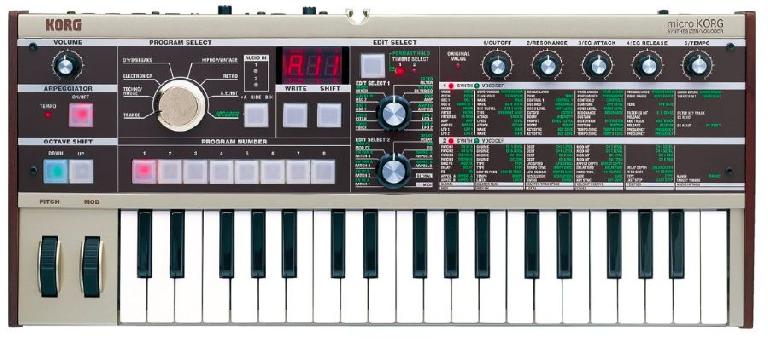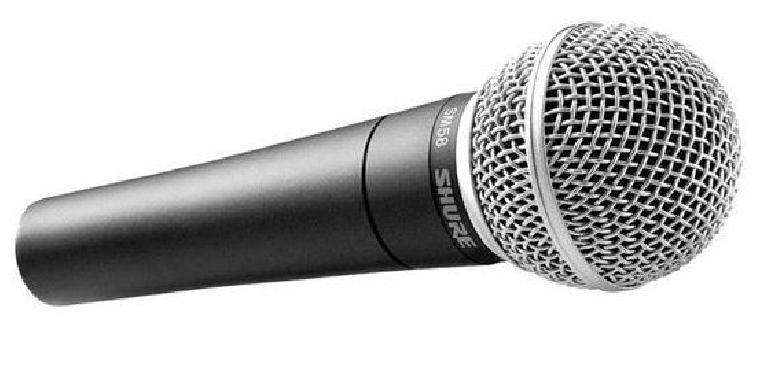Throughout the many decades of pop music, hip-hop, techno pop, electronica and more, unknown artists have defied the odds against them achieving fame, fortune and solid gold. Sometimes, with instruments and gear that were seemingly worthless... Till the right hands got a hold of them. In this article, I’d like to go over some really cheap gear that made it big, later. Great examples of why you do not need the latest, greatest, brightest, bling-i-est gear out there to throw down and make a name for yourself.
Think you need the Newest DAW? Try a Loop Pedal.
One of the misconceptions that I’ve seen come up again and again in my career has been the idea that you need a studio to start making music, or at least a laptop. This couldn’t be farther from the truth. In fact, there’s a whole slew of amazingly talented musicians that just use loop pedals with either a mic (vocals, beat boxing), guitar, and many other instruments out there as their sole studio.
Think that these artists are limited to bedrooms, attics and street corners? Think again. In fact, there is a large, large group of loop artists that regularly fill coliseums. Some even play Saturday Night Live, in the case of Imogen Heap, who uses an Electro-Harmonix Repeater ($499). Or, Dub FX, who uses a Boss RC-50 ($399) live, and blows minds all over the world, building amazing beats and choral arrangements, and many more instruments with just his voice. They didn’t start off with much. And they still aren’t using much. How cool would it be to show up at a gig with just a mic and a pedal?
Looking for a Workstation Keyboard? The Roland W-30 and the Prodigy
Next time you say to yourself, “Hey, I need to go out and spend 4K on a new keyboard to start my new album!” Consider this: Most of Liam Howlett’s early work as the Prodigy was, at its heart, the Roland W30. In fact, Liam still uses it, and used to buy additional W30s and just sync them via MIDI. One of the things that was so cool about the W30, outside of the built-in sampler, which was a Roland S-330 at its heart, was that it was also coupled with an MC-50 sequencer. A really powerful Roland sequencer that had been a separate purchase for a long time. It was in fact, the internal sequencer, not the sampler, that was so valuable to Howlett, as it worked at the heart of many a MIDI rig later for him, as his main sequencer. Having spent a lot of time with a W30, I can tell you from first hand experience it was, and still is a beautiful piece of gear. But I should mention that the W30 had already been around a while when Howlett first got his hands on it, and it was not the latest and greatest.
You don’t really need to find a W30, which can go for as little as $300 on Ebay , however. There are tons of old workstation keyboards all over eBay and several pawnshops that have excellent internal sequencers, like the W30. The XP series from Roland is still amazing, and very affordable. I still use mine, every now and then, too!
Need a Synth with a Vocoder? The microKorg and the Killers
When I first bought my microKorg, more than a decade ago, I was surprised at how feature packed such a small unit was. And I really loved the vocoder. At the time, I couldn’t really get used to the keys, and was knee-deep in some other synths of more complexity, at the time. And kinda felt like the microKorg, though robust, still felt like a toy.
Imagine my surprise when I saw the little tyke at the top of the Killers Apex Keyboard stand, center stage at the Shoreline Theater in San Jose, CA, years later. Apparently the microKorg is responsible for a great many of the leads and other synth parts heard on their early albums, like Hot Fuss. And it makes sense—The MicroKorg is small, light and easily portable. And it’s tiny price ($200) makes it an easy replacement, should things go south, on tour. Brandon Flowers has stated in interviews that it was the microKorg and the Nord Lead (which, used, can also go for a great price) that were what he could afford for their first album—Hot Fuss. And were purposefully brought back for the next albums, just to keep the vibe.
Need a Mic? Try Bono’s Shure SM58!
New artists, especially new vocalists will sometimes get the idea that they need the newest, baddest, microphone on the market. I know I love my Neumann. But I also have another microphone that I enjoy using just as much, and it didn’t cost me nearly as much as my TLM104.
The SM58 has been a live and studio mic staple for many, many years and has more than a few highly famous artists who will happily sing their love for the small, sturdy champion. Once such artists is U2’s very own, Bono! Do a web search for either pics, or info on Bono's mic of choice, and you’ll always run across the 58, or it’s older brother, the SM57. And it’s not just Bono. Brandon Flowers (Killers, listed above), Madonna. The SM58 has also been used widely for Foley, field recording, and many more applications both indoor, and in the studio.
One thing I love about the SM58 (and the 57) is that you can drop this mic a hundred times over, and it still keeps coming back for more. My 58 is a standard part of my gig bag. It’s not necessarily always my mic, these days. But, in my early days, it was. Along with many, many other artists. Oh, and let’s not forget about the price... $100.
Conclusion
There are many more examples of great pieces of gear, all the way down to straight up toys that have been utilized, recorded and even performed with on stage, that do not match the price requirements that many believe would believe fulfilled by what they see on stage. Music, thankfully, doesn’t matter what we make our music through. She just wants to keep hearing us jam.






 © 2024 Ask.Audio
A NonLinear Educating Company
© 2024 Ask.Audio
A NonLinear Educating Company
Discussion
Want to join the discussion?
Create an account or login to get started!